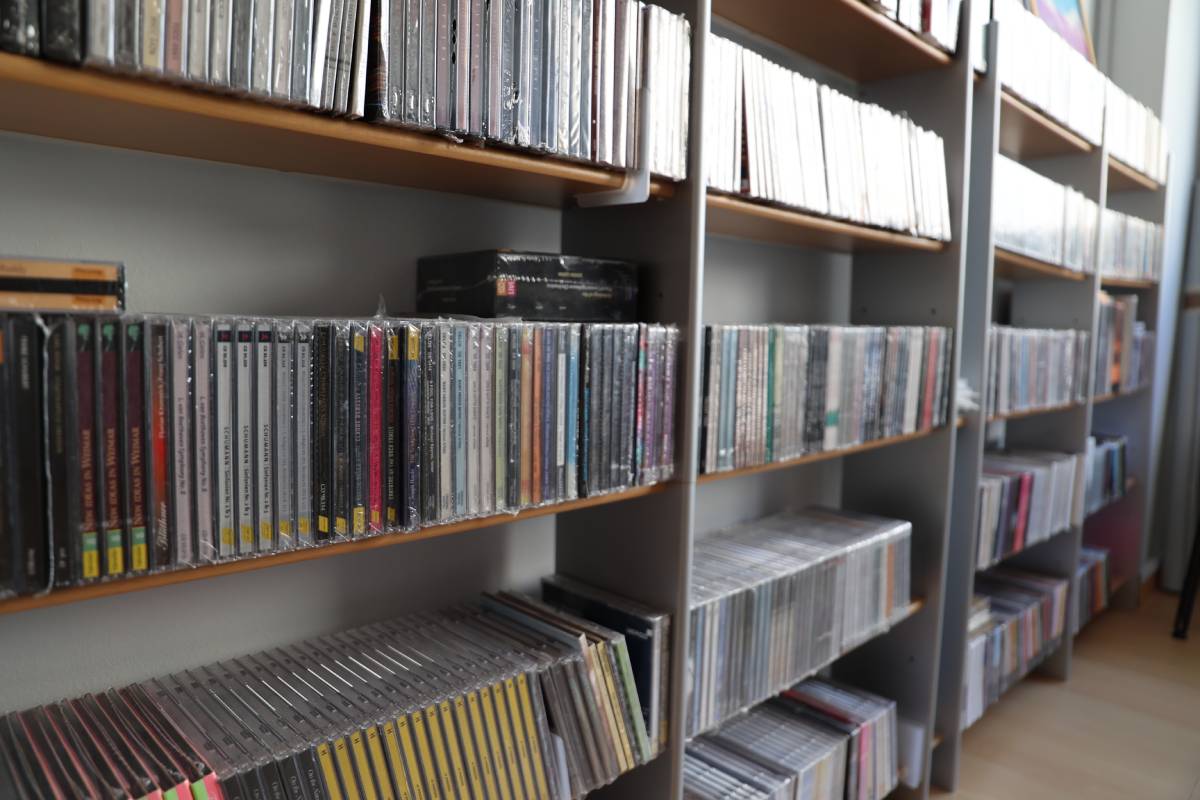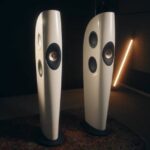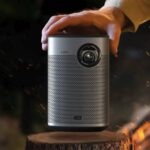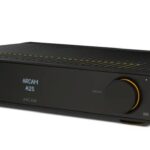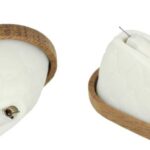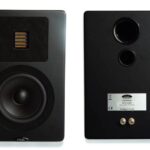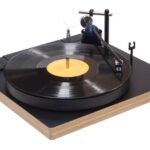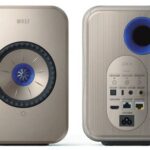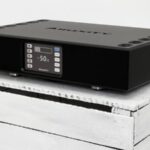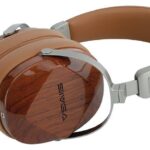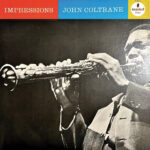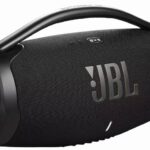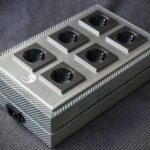With innovations such as the legendary Ring DAC and the dCS Digital Processing platform, technologies applied to the top Rossini series, a wealth of digital connections, excellent digital signal management capabilities and the new Mosaic Control application, this amazing implementation exudes quality, attention to detail and prestige of dCS, a company that has written its own history in the field of high quality audio.
dCS has a long story in the field of digital audio with significant innovations and pioneering technological applications, with exclusively its own implementations at the level of signal processing and conversion circuits. It is rightly one pf the most recognized manufacturers in the category of high-end digital sources.
While we are not talking about a device that belongs to the top line of the company, the Bartók -which was presented in 2018- is placed under Rossini and Vivaldi, it is magnificent to find that a simple combination of materials, code, know-how and aesthetics creates a technological entity clearly superior to all expectations. With innovations such as the legendary Ring DAC and the dCS Digital Processing platform, technologies applied to the top Rossini series, a wealth of digital connections, excellent digital signal management capabilities and the new Mosaic Control application, this amazing implementation exudes quality, attention to detail and prestige of dCS.
Pluralism a la dCS
From the very first glance we can see the austerity of the aesthetics with the particularly readable display of high definition indicators on the left and right, the level slider (which can also be used to access the menu) and between them, a switch group, precisely placed, for some basic functions, such as input selection, filter selection, analog output selection, menu access and device on/off.
Focusing on the chassis, the robustness and the finish, the aircraft type aluminium with special damping materials inside and the characteristic anodizing texture that concerns, apart from the surfaces of the device, both the potentiometer and the front switches, compose an impressive overall picture.
At the back of this superstructure we see a large number of digital connections that will satisfy even the most demanding user. This provides a USB Type-B port with asynchronous operation, which can handle PCM signals up to 24bit/384kHz and DSD64 or DSD128 from a computer running Windows or Apple Mac, and a USB (2.0) type A port for connecting storage media, which can manage PCM music files up to 24bit/384kHz and DSD128.
In terms of conventional digital inputs we measured three S/PDIF, one Coaxial RCA, one BNC capable of receiving PCM signals up to 24bit/192kHz and DSD64 and one Toslink capable of up to 24bit/96kHz as well as two AES/EBU with plugs XLR, capable of PCM signals up to 24bit/192kHz και DSD128, which can be used as a pair by raising the management capabilities to 384kHz (and offer the ability to stream SACD data from the company’s transport).
For the connection to the network there is an Ethernet port for music streaming through the well-known music libraries Tidal, Qobuz, Spotify or stored files of all basic formats (WMA, ALAC, MP3, AAC, OGG and compatibility with MQA material) with capabilities up to 24bit/384kHz and DSD128. Apple AirPlay support at 44.1 or 48kHz is also important. Bartók can work with dCS clocks and for this purpose has two inputs and one output with BNC plugs for Word Clock.
In the field of analog outputs, an Unbalanced pair (RCA) and a Βalanced pair (XLR) with adjustable level are included, while the device also has adjustable sensitivity through the menu settings where we can give output level characteristics depending on the devices that follow (0.2, 0.6, 2 and 6Vrms), minimizing the need to use a preamplifier. In addition, to all of the above you should add the one can also get a version of Bartók with a headphone amplifier (which can also be seen in the photos).
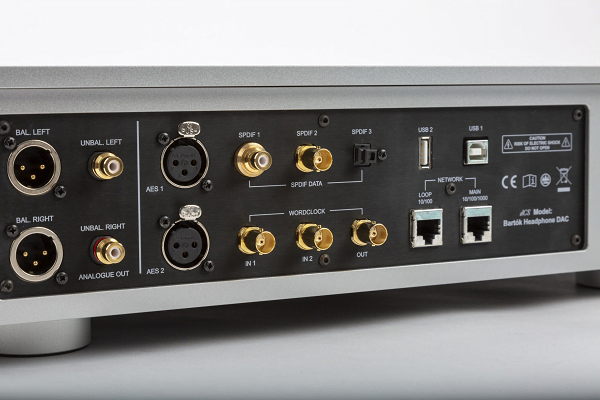
My Precious Ring(DAC)…
At the heart of all these impressive features is the timeless Ring DAC, the custom conversion circuit developed by dCS (to avoid the ready-made solutions of well-known integrated circuit companies), in its latest version, which is accompanied by the dCS Digital Processing platform that offers a wide range of settings and options in digital conversion and analog signal output.
The Ring DAC uses completely discrete components, as well as a signal processing platform, being, in fact, a specialized computer with the ability to customize and upgrade the software, depending on developments and needs. The main purpose of this processing platform is to create a 5-bit resolution signal stream with very high oversampling that reaches 64x.
It does this by first performing a fairly robust digital filtering (which generates a signal at a very high sample rate, encoded with a few bits) to be followed by psychoacoustically optimizes noise shaper, whose function is to displace the increased noise quantization, due to reduction in the number of bits, away from the acoustic region. The DAC section maps these 5-bit samples to a range of power supplies that form the heart of the Ring DAC.
The participation of each source is equal to the final result (reducing the need of the high precision in construction) with the main advantages of the process being the lowest deformation and the very high level of low linearity, which can and does make the difference in naturalness in performance of music, says dCS. Ring DAC is based on digital processing in FPGAs (Field Programmable Gate Arrays) and a digital signal to analog conversion board, with discrete semiconductor circuits, with a fully balanced, differential, dual-mono design, which results in a fully discrete differential output stage in a class A.
Bartók gives a choice between six digital filters for PCM signals and six for DSD to suit the needs, preferences and music choices of every music lover. In the basic settings all PCM signals are sampled DXD, although one can very easily choose DSD oversampling.
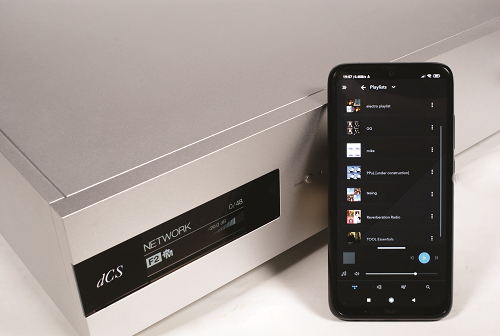
Remote control? No thanks, there is an application for this!
Bartók has a powerful new operating environment, as well as the corresponding control software called dCS Mosaic and allows listeners to manage the playback of their music from any source in an efficient, practical and simple way by accessing iRadio channels, digital sources and UPnP sources from a control point and provides easy access to DAC settings.
DCS unveiled Mosaic at the HighEnd show in Munich in 2019 and the new app brings improved functionality and a sleek, simple user experience to all owners of current dCS products
Streaming has been a core technology of dCS products since Vivaldi’s release and Tidal has long been available to dCS customers, but Mosaic will allow listeners to take advantage of Qobuz’s high resolution capabilities as well as its huge catalog music-CD quality offered by Deezer. Adding a library of online radio stations and podcasts from around the world enhances the variety of rich content options that will surely satisfy the listener.
A key feature of Bartók is the Mosaic Control app, which can be used with any current dCS product, using any iOS or Android device. With a full range of music search and playback features, dCS Mosaic Control App also provides a completely redesigned interface for communication with the company’s devices and managing setting and options so that the user has instant access in all the possibilities provided by his device.
When technology leads (finally) to emotion…
Having in front of us an admittedly promising implementation, we had, it is true, respectively high expectations and anticipation, as the moment approached when we would give the order to hear the first notes. From the very first seconds the acoustic result literally captivates with an unusual clarity throughout the frequency range, with solid volumes of musical instruments and a presentation of the orchestra in the space, which creates a mood of search for new vocabulary, so you can describe everything clearly these individual evaluable acoustic features that in this test had a uniquely their own existence.
From the first alternation of well-known pieces of music, we recognized – with almost childish enthusiasm – an astonishingly large and brightly clear stereophony both in expected places as in the famous “Promentory” from the collection “The Last of the Mohicans” (Soundtrack) and in pieces that concern very small ensembles such as the ”Hell or High Water” of the eponymous collection of the much-loved Sara K, redefining the quality levels concerning the spatial planning of the orchestra and the separation of the instruments. In these special moments of listening, it was almost impossible for us to continue the experiment with traditional evaluation standards as the fantastically realistic piano and the absolutely lyrical and granite double bass of the song “The Way We Were” – Tsuyoshi Yamamoto Trio added a lot to the process new features, with believable volumes and a variety of tonal gradations to us a sense of tangible touch.
But what is also required is the transcendental ability of a device to distract you from the perfect features of individual components and to place you in the music scene, to bring you in contact with emotion and interpretation and finally to deliver the psychosomatic experience that the creator has from the beginning in his mind at the moment of inspiration. And Bartók did that very well.
These are the rights places to focus on the essence of the experience we have gained and the purpose that is called to serve any device with whatever capabilities it offers. Clearly one of the demands of any prospective owner of a dCS Bartók is to be able to evaluate each of the crucial acoustic features of a lineup, and in this area we are dealing with a true champion, among other distinct implementation claiming a place on the podium.
In summary, Bartók is a complete device that respects and manages just as effectively all possible sources of music playback, in a magically easy way, for both those looking for a well-organized and easy-to-use music library and those in need of a high-end digital converter.
Overview
dCS Bartók
Description: Media/Networik player/Converter d/a
Digital inputs: 3x S/PDIF (1x RCA, 1x BNC, 1x Toslink), 2x AES/EBU (XLR, with Dual Link capability), 1x USB (Client/Type B), 1x USB (Host/Type A, compatible with Flash/HDD FΑΤ12/32 and NTFS), 1x Ethernet port
Sample rates: 192kHz/DSD64 DoP (S/PDIF RCA/BNC, AES/EBU), 96kHz (Toslink), 384kHz/DSD128 DoP/SA-CD (AES Dual Link), 384kHz/DSD128 (USB)
Analog outputs: 1x single ended (RCA), 1x balanced (XLR), Headphone amplifier capability (single ended/balanced)
Clocking: 2x Word Clock In, 1x Word Clock Out
Other features: Select digital filters, upsampler DXD/DSD, sensitivity selection, control via Mosaic Control app
Dimensions: 444x430x115 (mm, wxdxh)
Weight: 15.7kg
Price: €13.100 (12.450, cash)
info: Orpheus Audio, tel.: 210-5221.524, http://www.orpheusaudio.gr/, https://www.dcsltd.co.uk/
Τhe article was published in the third issue of YELLOWBOX from George Katrakazas & Dimitris Stamatakos._ΥΒ


